Recently, a charming piece of guitar history landed at guitarplayers.net – a vintage Harmony Electric Guitar, brought in by a local consignor. This guitar immediately stood out with its lightweight feel, surprisingly raucous sound, and a neck built for speed. While these guitars were produced in significant numbers, this particular model, bearing the Harmony name post the original Chicago factory closure, holds a unique appeal for players who appreciate vintage character and tone.
While pinpointing the exact origin of this Harmony electric guitar proves challenging due to the various iterations produced over time, the components and hardware strongly suggest a Japanese manufacture, aligning with the parts commonly found on late-1960s Teisco/Kawai instruments. Having extensive experience with these vintage import guitars, I was eager to bring this Harmony back to its full potential.
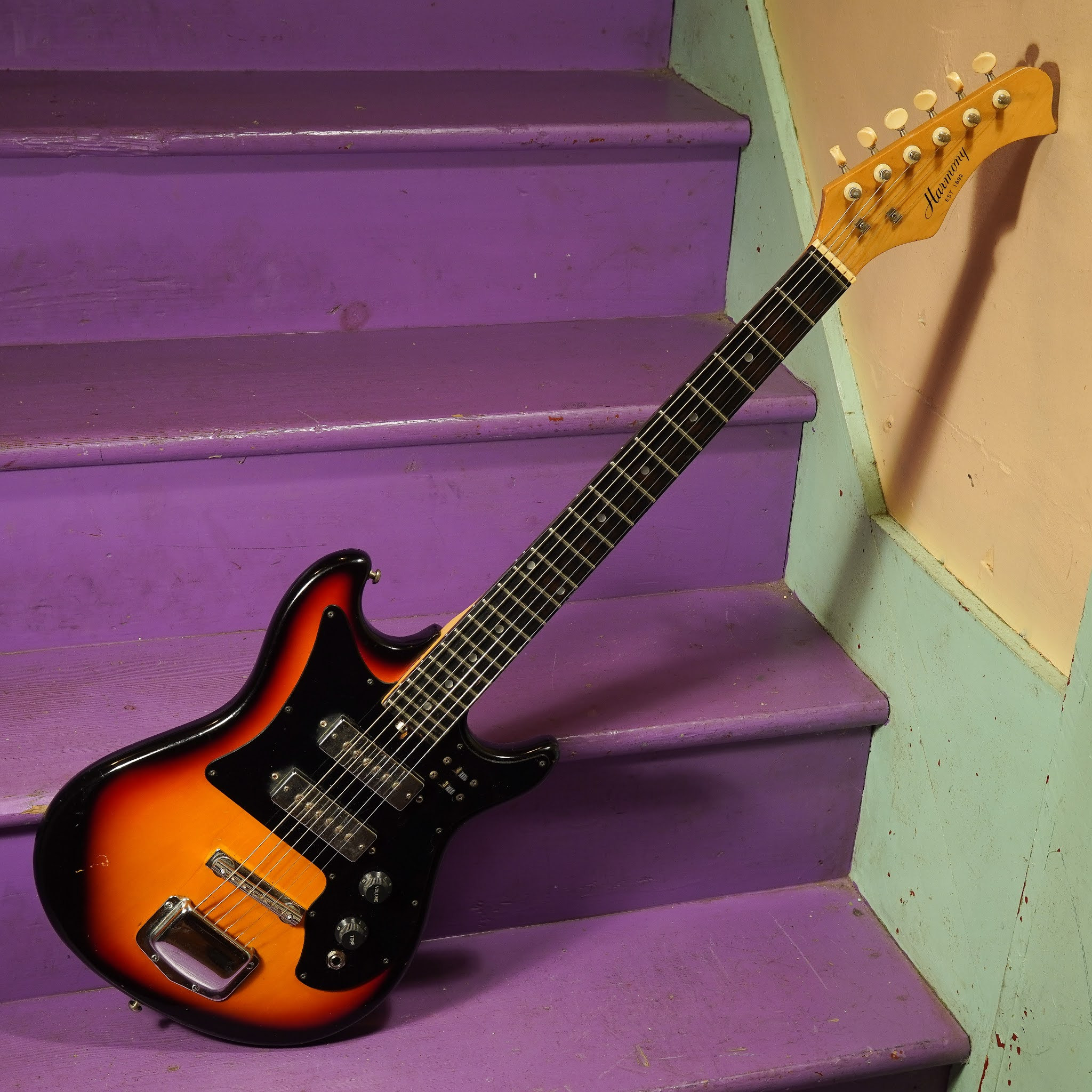 Close-up of the Harmony electric guitar headstock showcasing the Harmony logo and tuners, emphasizing the vintage aesthetic.
Close-up of the Harmony electric guitar headstock showcasing the Harmony logo and tuners, emphasizing the vintage aesthetic.
The restoration process involved the typical procedures for breathing new life into these older student-grade electric guitars. A key upgrade was replacing the stock jack with a robust Switchcraft model, ensuring reliable connectivity. The electronics received a thorough cleaning to eliminate any scratchiness or signal loss. To enhance playability, a fret level and dress was performed, followed by the addition of side dots for improved fretboard navigation. Recognizing the needs of modern players, the bridge was compensated for contemporary string gauges (3 wound, 3 plain), and the strap button was thoughtfully relocated to the upper horn for better balance and comfort. Finally, a complete setup optimized the guitar for slick, responsive play.
One of the intriguing aspects of this Harmony electric guitar is its unconventional pickup configuration. Positioned more towards the neck and middle, rather than the traditional bridge placement, the dual single-coil pickups offer a unique tonal palette. Despite the limited positional variation, the guitar delivers a range of inspiring sounds. Furthermore, engaging both pickups simultaneously unleashes a sonic surprise: they are wired in series, effectively doubling the output. This series wiring configuration empowers the guitar to drive an amplifier with an intensity akin to a hotter vintage humbucker, essentially providing an instant “lead boost” at your fingertips.
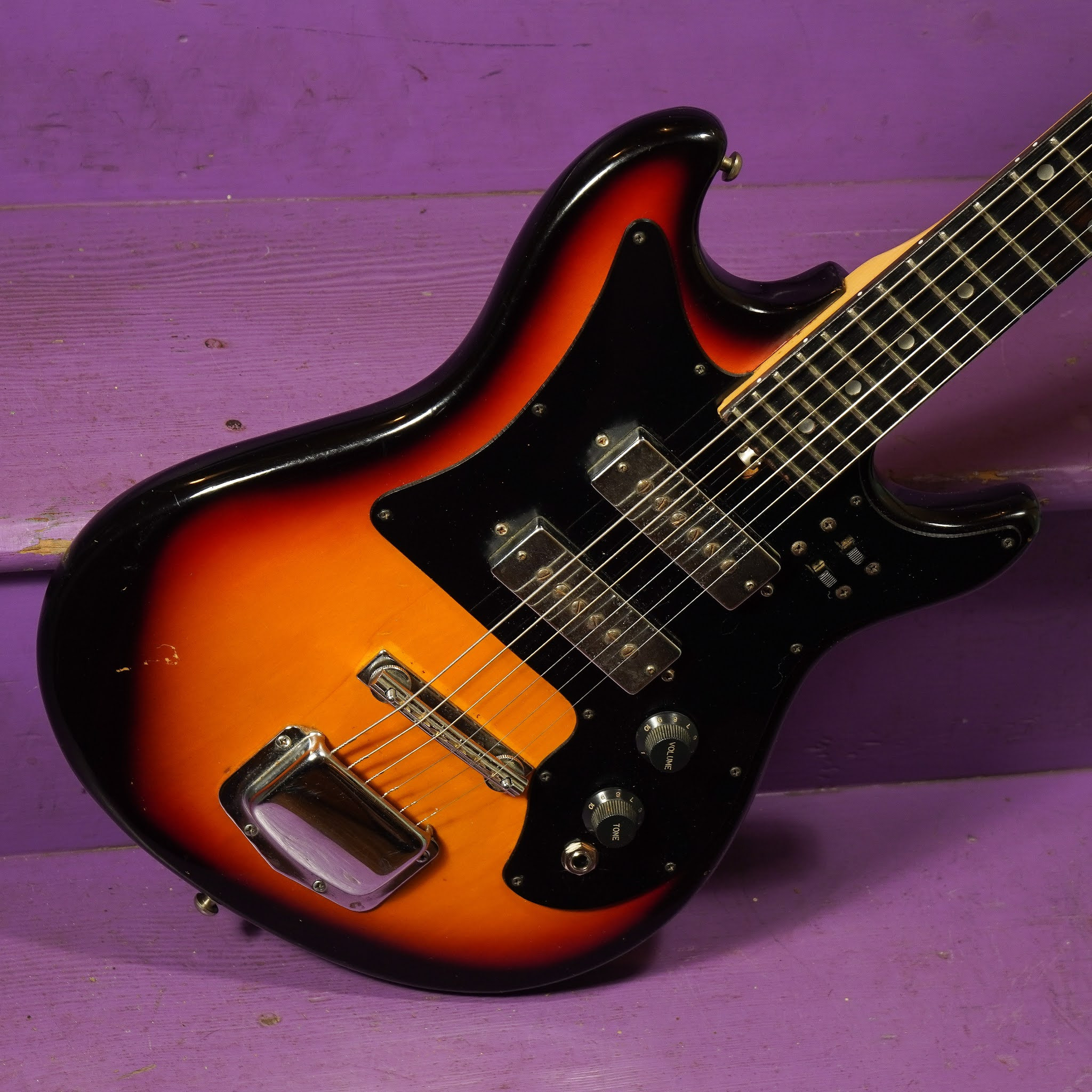 Full body shot of the restored Harmony electric guitar, highlighting its compact size and overall condition after restoration.
Full body shot of the restored Harmony electric guitar, highlighting its compact size and overall condition after restoration.
The pickups themselves possess a distinctive voice, residing sonically somewhere between the growl of a P90 and the shimmering character of a 1960s Harmony-style DeArmond goldfoil pickup. This tonal blend results in a slightly “sleazy” and textured sound, yet when the volume is reduced, the tone cleans up to reveal a more metallic and articulate crispness, offering surprising versatility.
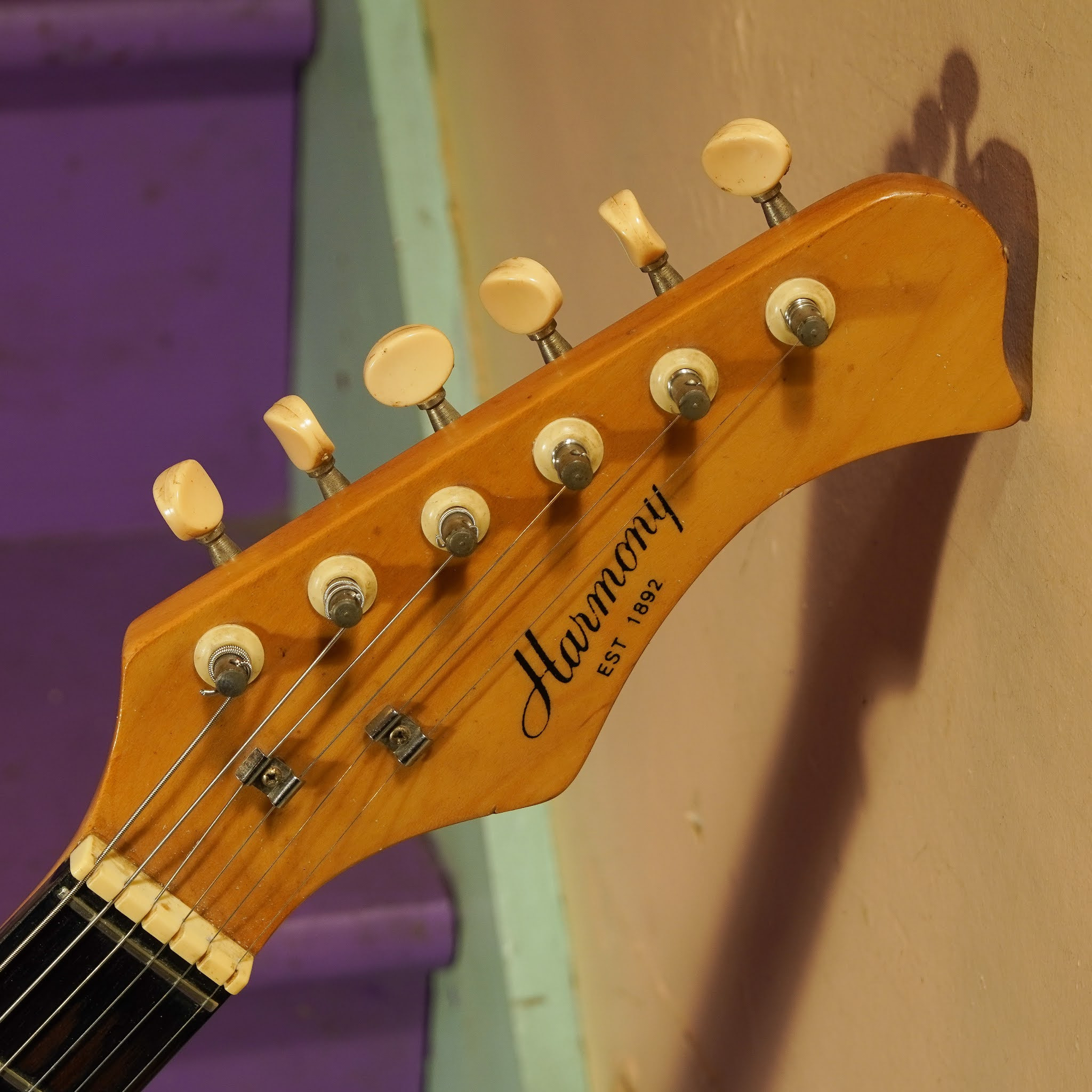 Detailed view of the guitar body, showcasing the finish, pickups, and bridge, emphasizing the vintage aesthetics and hardware.
Detailed view of the guitar body, showcasing the finish, pickups, and bridge, emphasizing the vintage aesthetics and hardware.
Guitar Specifications and Condition:
Repairs Undertaken: Fret level/dress, side dots added, bridge compensation, new Switchcraft jack installation, comprehensive setup.
Body Wood: Solid basswood (speculated).
Bridge: Archtop-style, height-adjustable, compensated for 3 plain and 3 wound strings.
Fretboard Material: Rosewood-like.
Neck Wood: Maple.
Pickups: Two adjustable-pole single-coil pickups.
Action Height (12th Fret): 1/16″ (fast).
String Gauge: 46w-10 lights.
Neck Profile: Slim C shape.
Fretboard Radius: Approximately 12″.
Truss Rod: Adjustable.
Neck Relief: Straight.
Fret Style: Medium-low.
Scale Length: 24 3/4″.
Nut Width: 1 5/8″.
Body Width: 12″.
Body Depth: 1 1/8″.
Weight: 4 lbs 12 oz.
Condition Notes: The guitar remains largely original, with the exception of the upgraded Switchcraft output jack and the added side dots. It is in good overall condition, exhibiting expected scratches and minor blemishes commensurate with its age. A crack near the jack on the pickguard has been stabilized with a washer, effectively concealing and reinforcing the area. The bridge has been modified with compensated “saddle” grooves to enhance intonation.
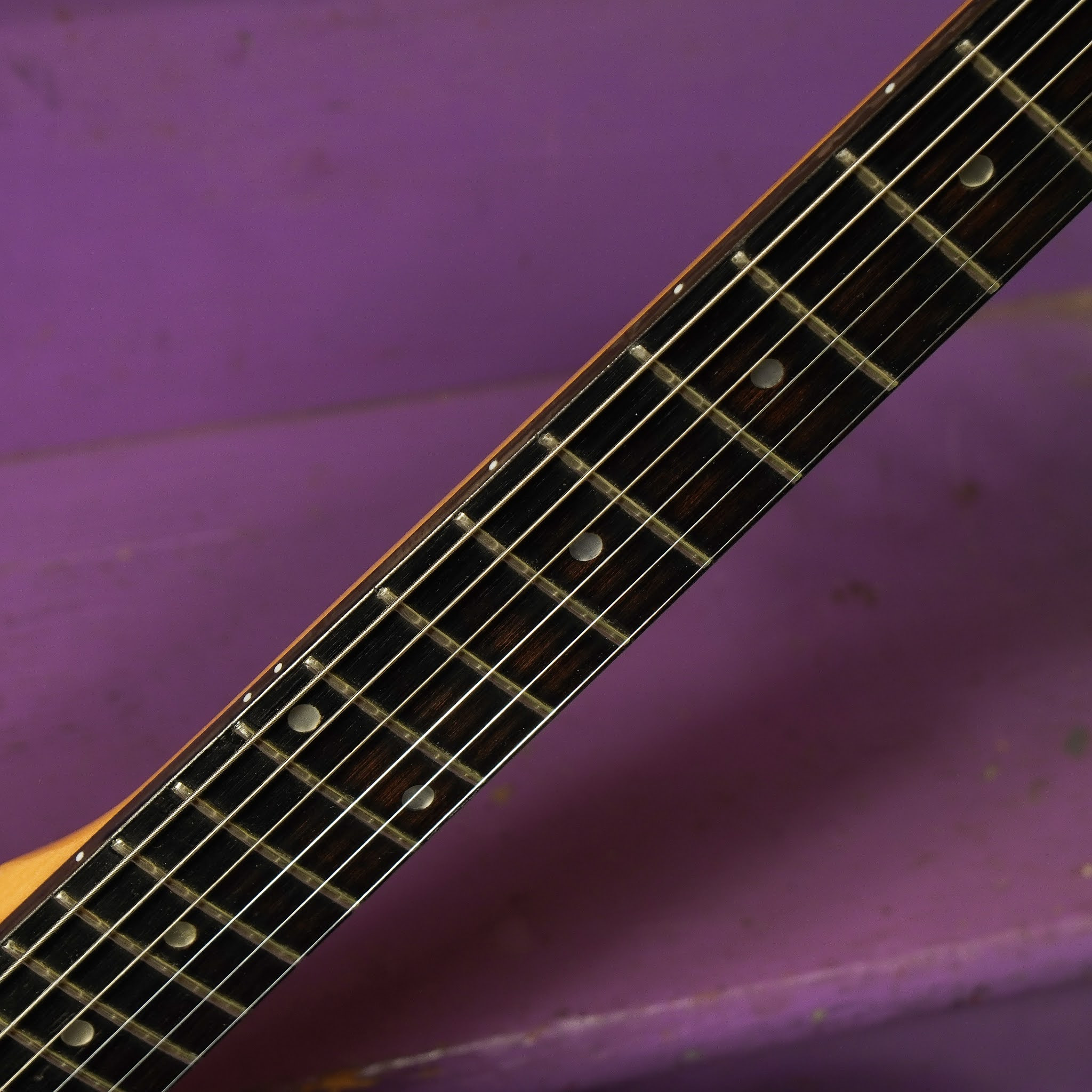 Image highlighting the guitar's neck and fretboard, showcasing the added side dots and fret condition after the fret level and dress.
Image highlighting the guitar's neck and fretboard, showcasing the added side dots and fret condition after the fret level and dress.
Included Case: Comes with a period-appropriate, though not original to this specific model, chipboard case.
In conclusion, this Harmony electric guitar, after careful restoration, is a testament to the enduring appeal of vintage instruments. Its lightweight design, comfortable neck, and unique tonal character make it a compelling option for players seeking a distinctive voice and a piece of guitar history. Despite its mass production origins, this Harmony stands out as a characterful and playable instrument ready to inspire a new generation of guitarists.
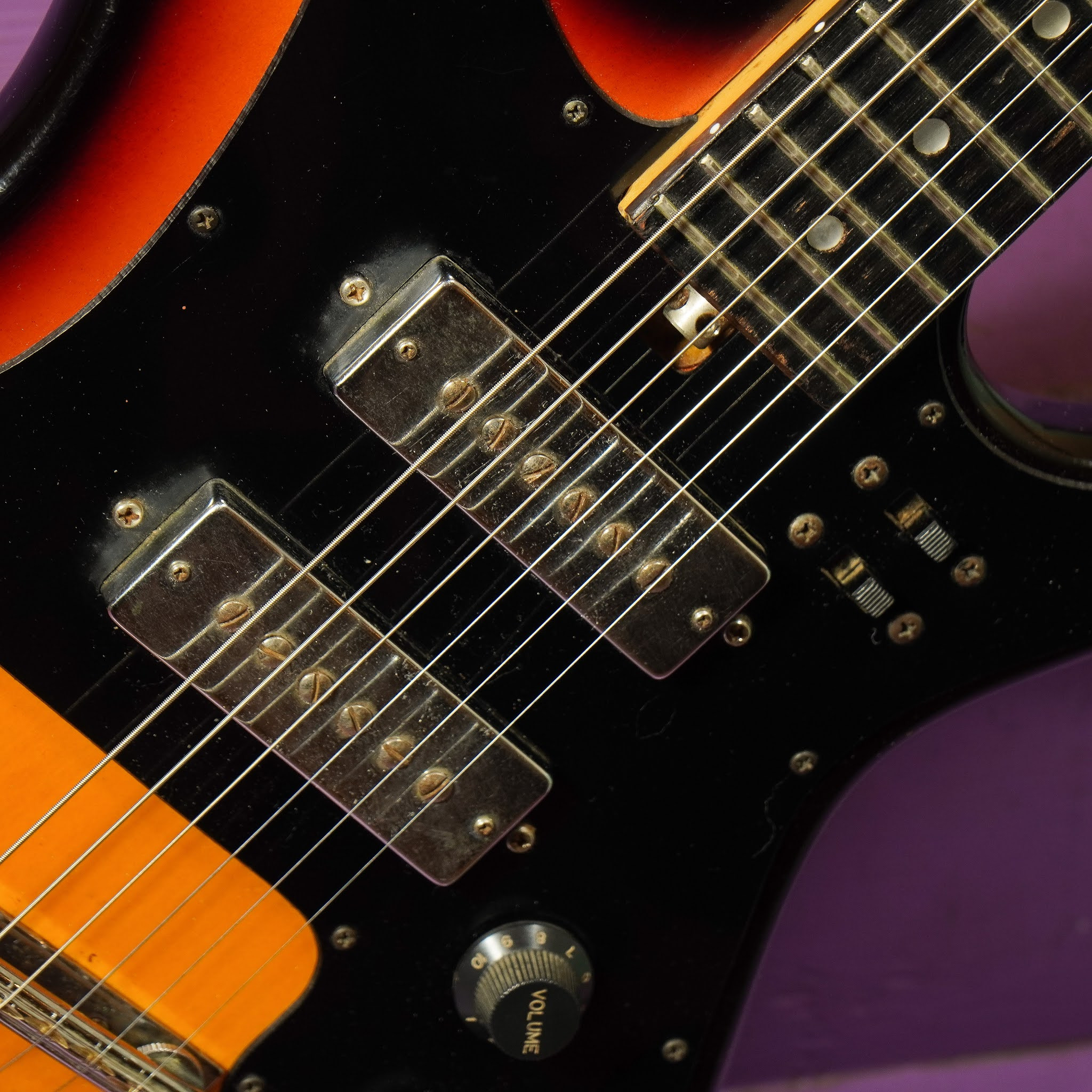 Close-up image showing the guitar's pickups and controls, focusing on the details of the electronics and their configuration.
Close-up image showing the guitar's pickups and controls, focusing on the details of the electronics and their configuration.
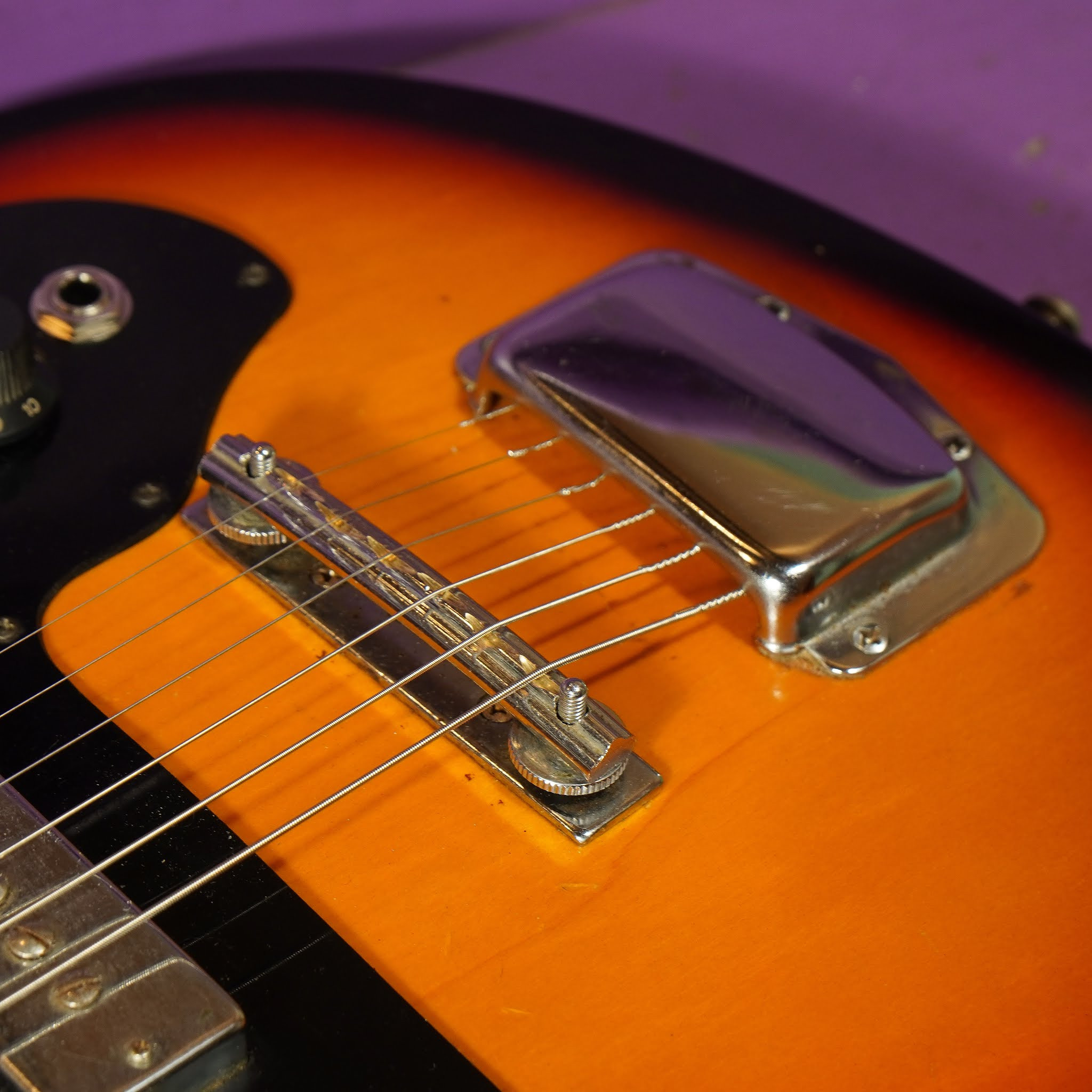 Image of the guitar's body from a different angle, emphasizing the shape and finish, and providing a sense of its overall aesthetic.
Image of the guitar's body from a different angle, emphasizing the shape and finish, and providing a sense of its overall aesthetic.
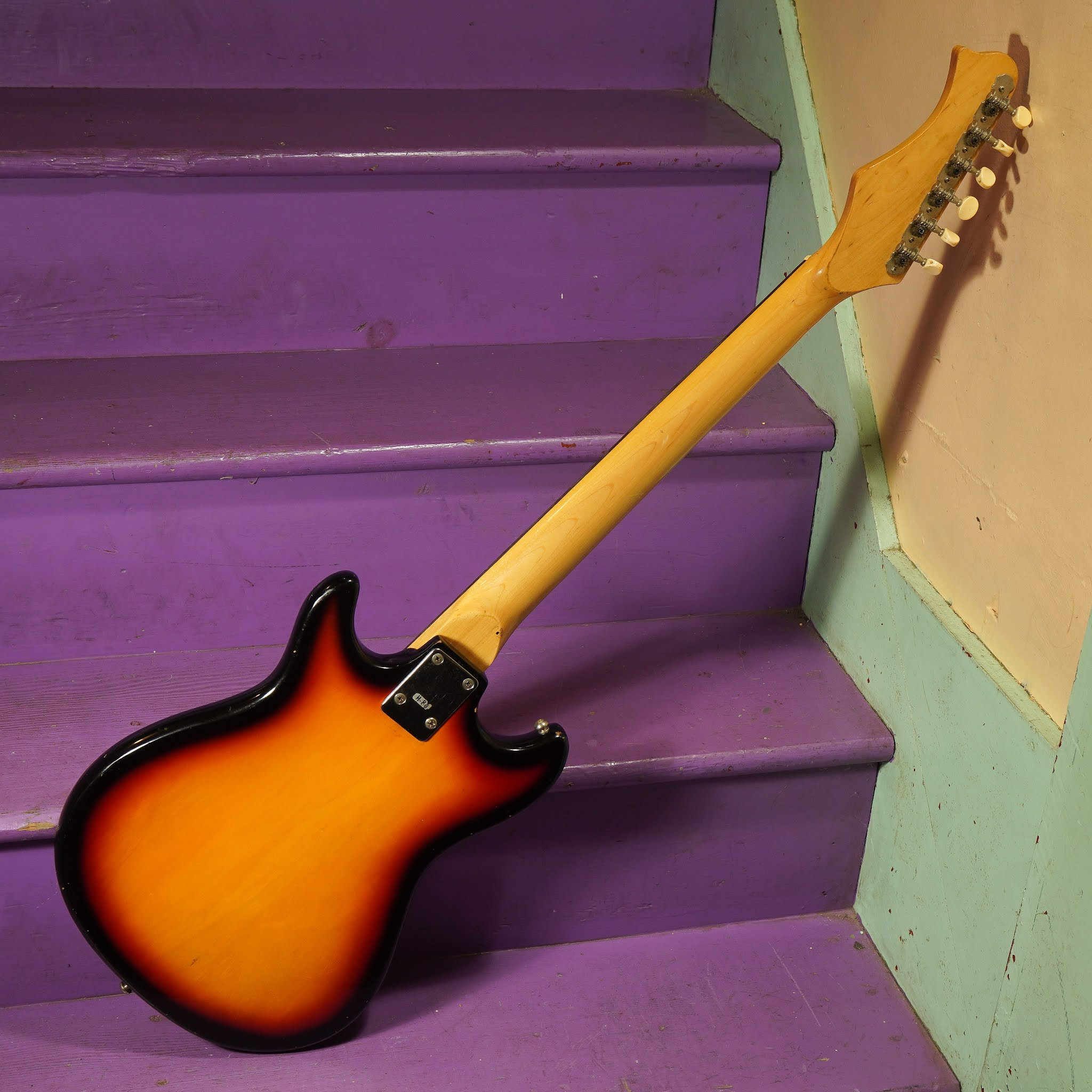 Image showing the guitar inside its case, highlighting the included period-appropriate chipboard case.
Image showing the guitar inside its case, highlighting the included period-appropriate chipboard case.
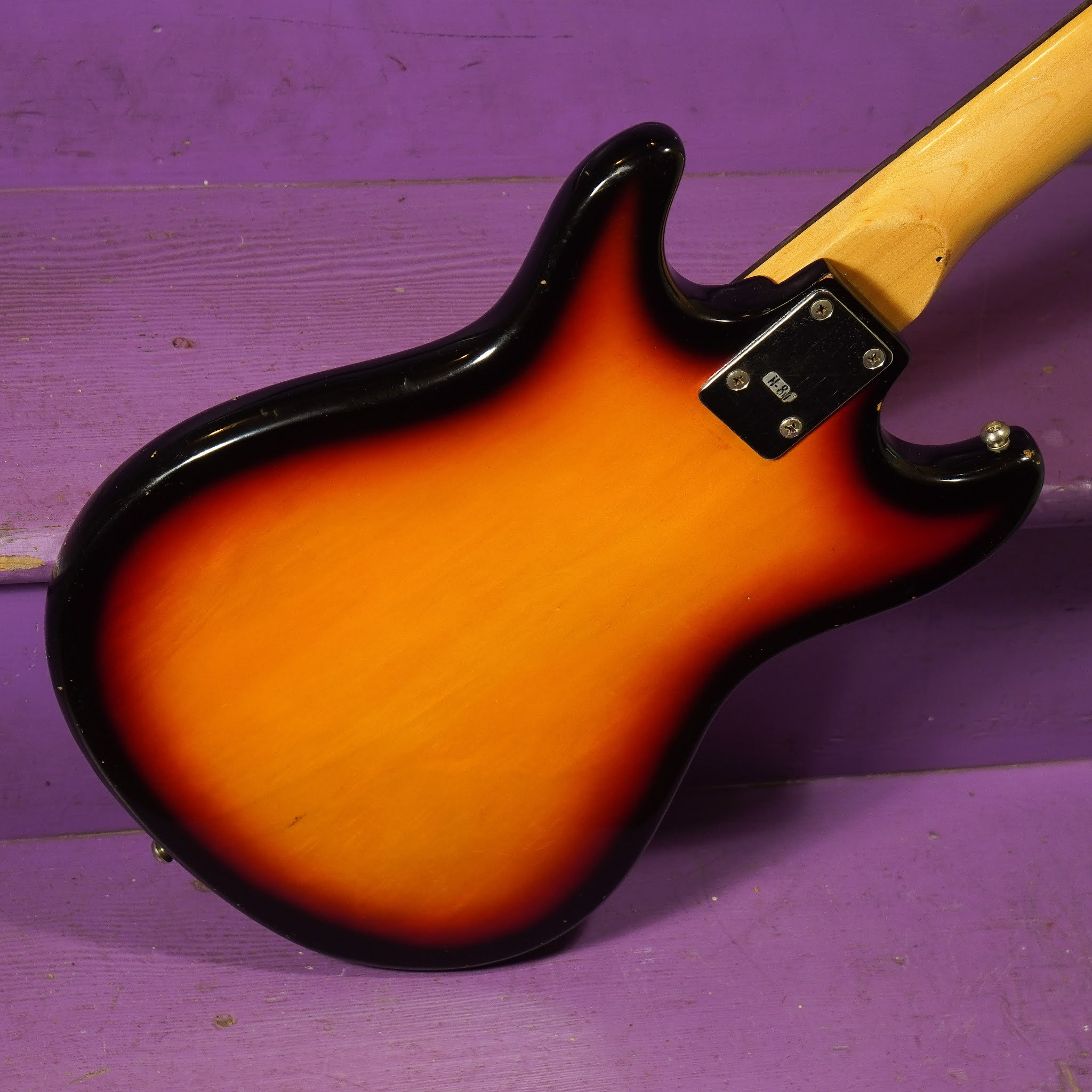 Close up of the guitar bridge and strings, showing the compensation adjustments made for modern string gauges.
Close up of the guitar bridge and strings, showing the compensation adjustments made for modern string gauges.
 Image showcasing the guitar's body thickness and lightweight construction, emphasizing its comfortable playing experience.
Image showcasing the guitar's body thickness and lightweight construction, emphasizing its comfortable playing experience.
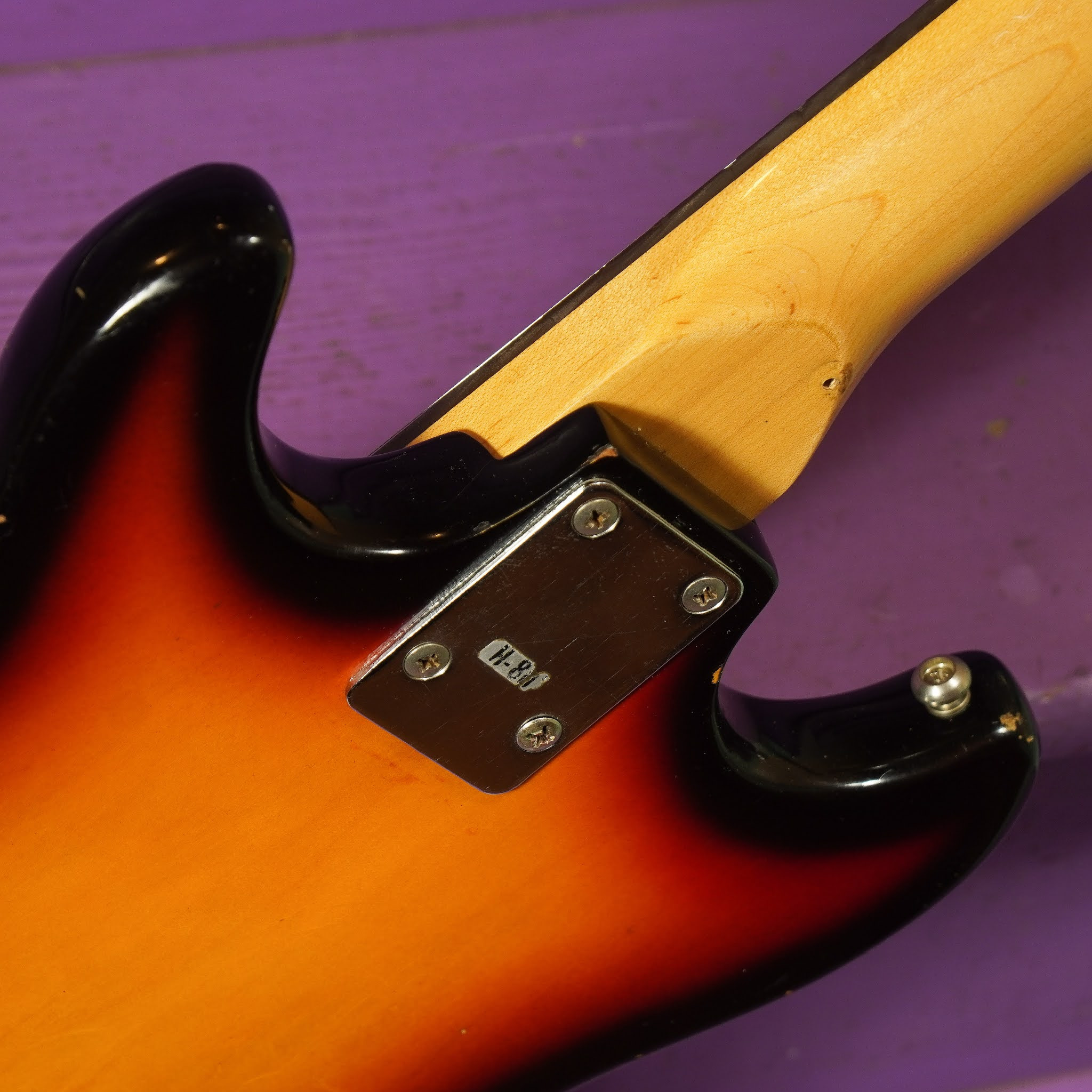 Rear view of the Harmony electric guitar, showing the neck joint and body contours.
Rear view of the Harmony electric guitar, showing the neck joint and body contours.
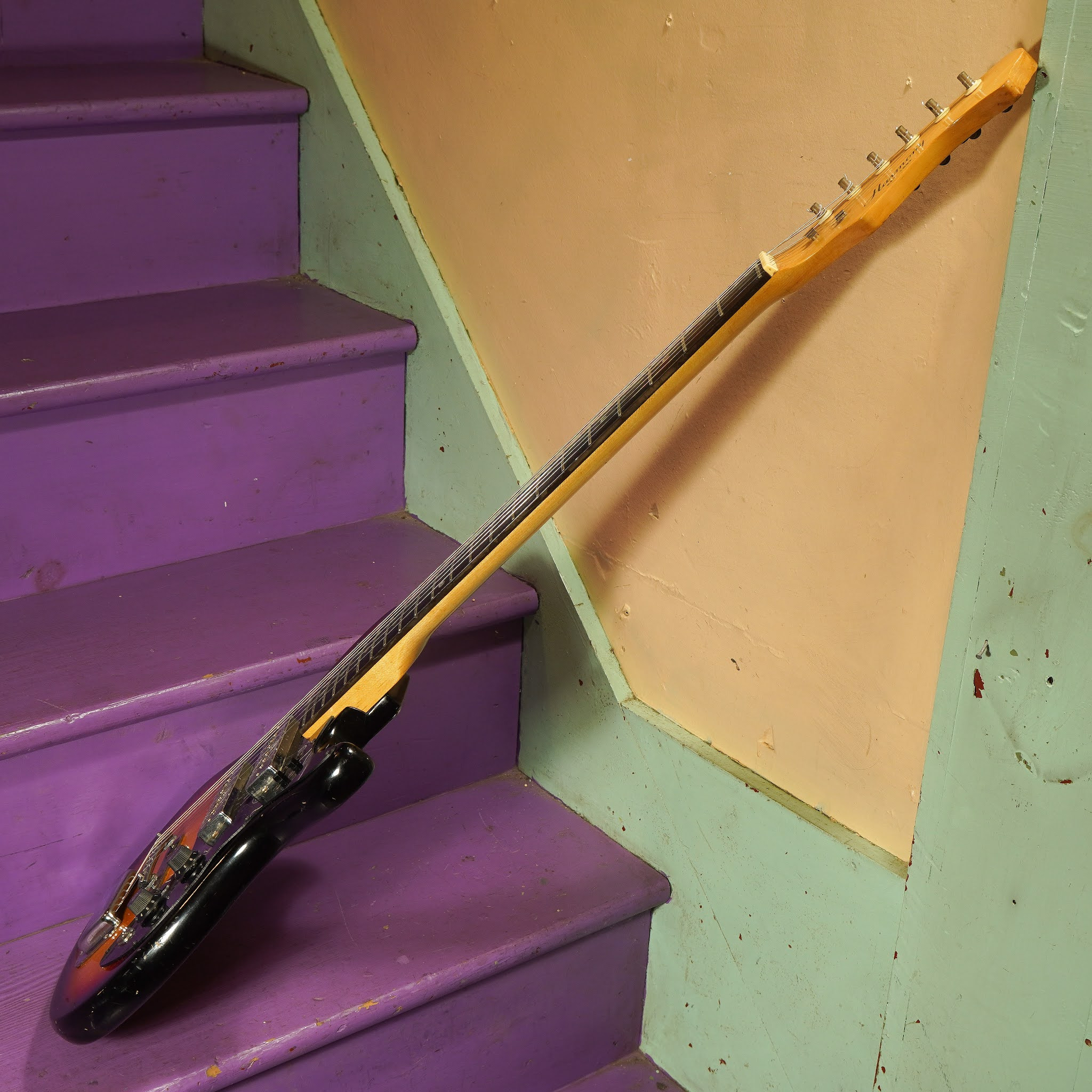 Angled shot of the Harmony electric guitar, capturing the overall design and vintage vibe of the instrument.
Angled shot of the Harmony electric guitar, capturing the overall design and vintage vibe of the instrument.
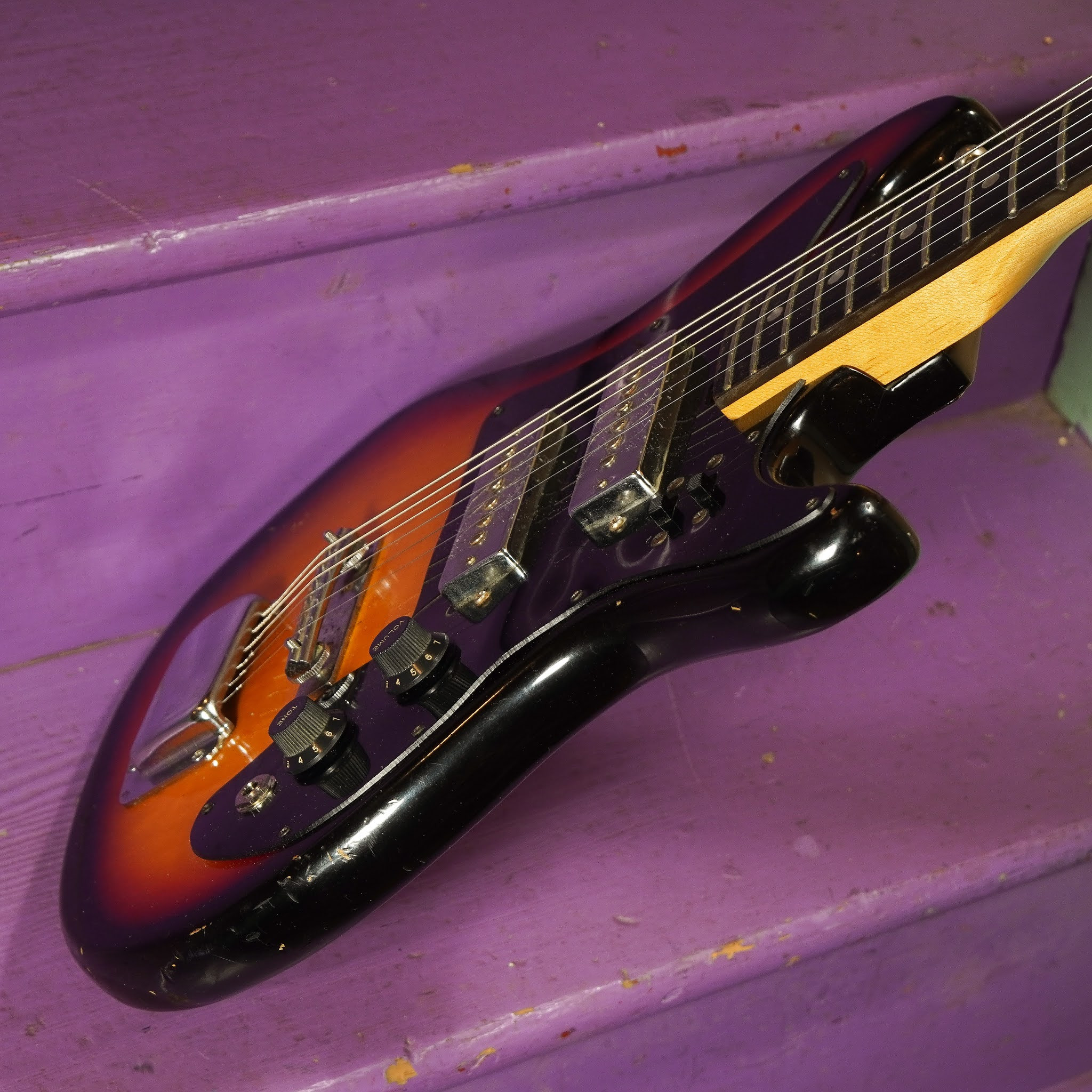 Image detailing the guitar's control knobs and pickguard, highlighting the vintage hardware and design elements.
Image detailing the guitar's control knobs and pickguard, highlighting the vintage hardware and design elements.
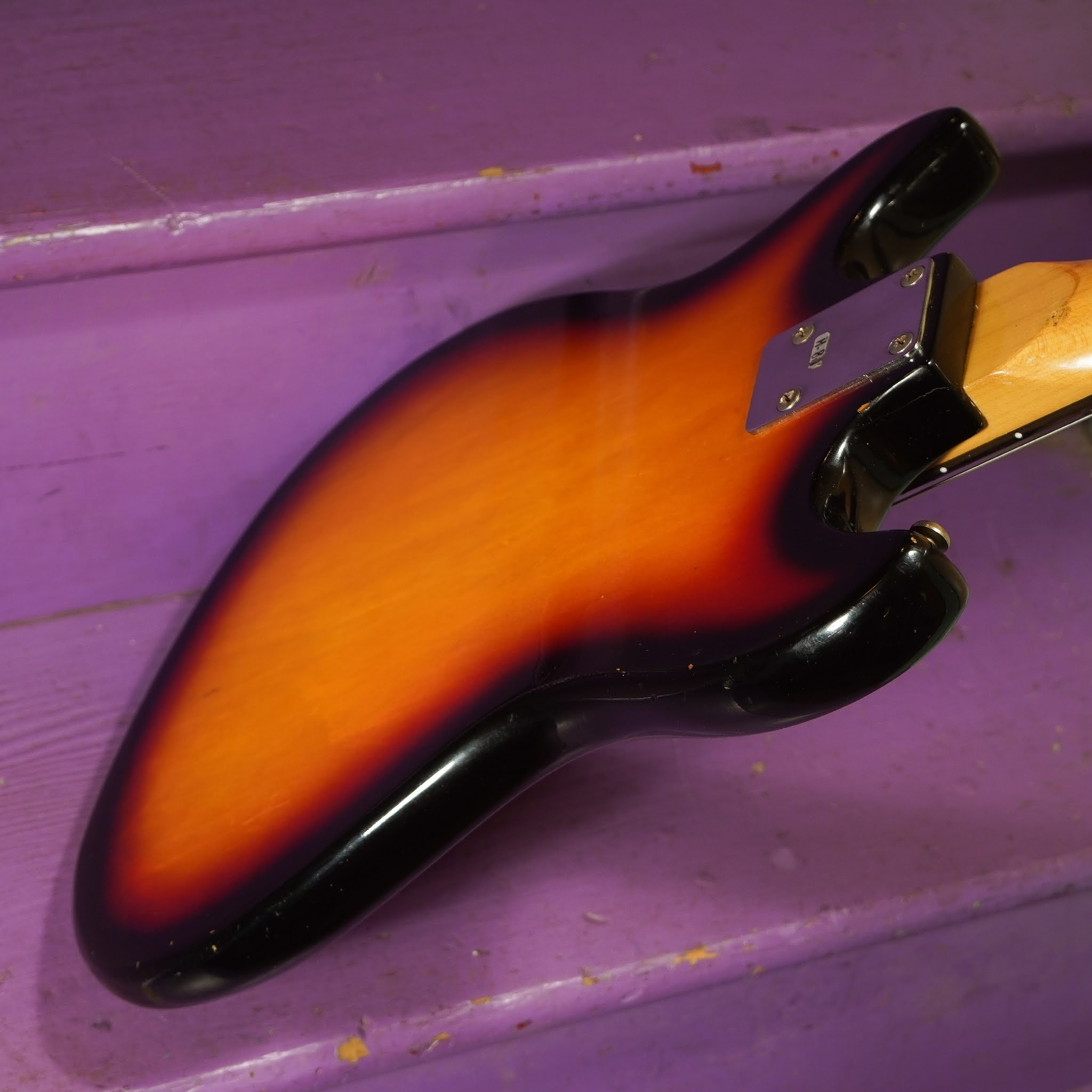 Image of the guitar headstock from a different angle, showing the tuners and string tree, emphasizing the vintage hardware.
Image of the guitar headstock from a different angle, showing the tuners and string tree, emphasizing the vintage hardware.
